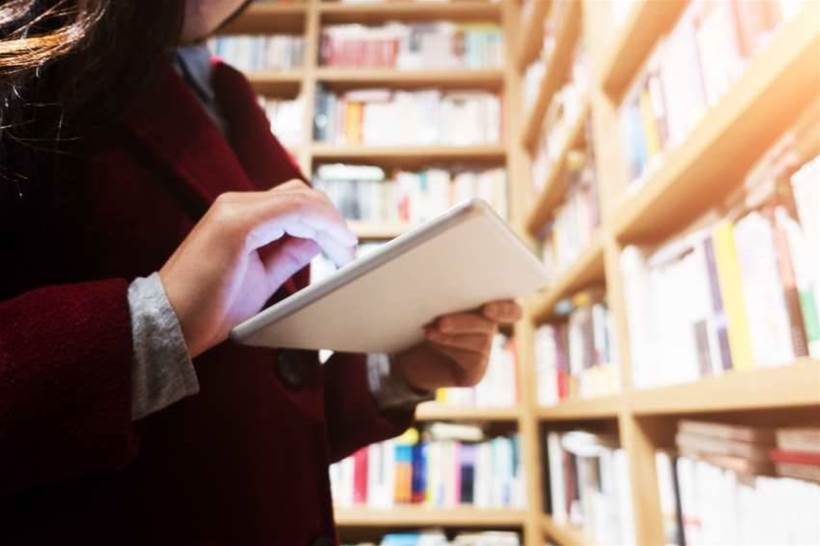The humble library is currently undergoing a “renaissance” with multiple technologies including the Internet of Things driving this transformation, according to professional services firm Arup.
Kim Sherwin is the Australasian lead for "Arup University", an internal business unit that acts a place to "question the norm, test boundaries and discover what is possible."
Sherwin recently conducted a workshop during Melbourne Knowledge Week in which she outlined how a future library would look and how it could have a positive impact for residents.
She and Ben Cooper-Woolley, head of Arup Digital’s NSW team, sat down with IoT Hub to discuss the current state of play in libraries, and how the Internet of Things may form part of their future.
Sherwin said a recent study conducted by Arup University, titled ‘Future Libraries’, suggested that despite the popularity of online sources of information, there is still a role for the traditional bricks-and-mortar library.
“[The study showed that] there is still a desire to have a physical space, a place where people can go and meet, connect and sometimes escape from that digital world,” she said.
“But at the same time, the digital aspect is growing in importance and significance and I think [libraries and online information sources] will live quite happily together going forward.
“Libraries and librarians of the future will need to keep evolving and adapting, and not to set themselves in stone.”
Sherwin said that libraries have traditionally been very large organisations, that are costly to run and operate.
Arup’s study demonstrated that flexibility is required in the use a library’s physical space, its service delivery and the skills of the librarians to “ensure they remain agile and move forward both functionally and with the external environment.”
The library as a platform
Cooper-Woolley acknowledges that libraries are competing with different devices for the provision of information.
However, he adds that libraries – and other physical spaces – need to consider themselves as “platforms”, and use devices as another avenue for information delivery.
Cooper-Woolley sees the Internet of Things as a way to improve the operational efficiency of a future library in a number of ways.
For example, Arup’s study observed that the University of Chicago’s Mansueto Library makes use of temperature and humidity sensors to ensure its underground repository of books is kept in ideal conditions.
Custom-designed robot cranes are then able to retrieve any book at a librarian’s request and bring it to the surface for viewing.
Cooper-Woolley foresees future libraries using IoT technologies to manage the space available inside the building.
For example, extra space may be required in the children’s section during school holidays to support a library’s holiday program.
An analysis of the foot traffic and crowd levels within a library can identify areas where furniture can be reorganised to create space while not impeding on other patrons’ use of the facility.
“IoT is playing an increasing role in how we can understand how we can utilise space, and it has a role in understanding how people want to use space and reconfiguring for their use,” he said.
Cooper-Woolley added that a future library could be an ideal location to learn about the Internet of Things by providing a hands-on environment to aid people’s understanding of the concept.
“Libraries need to provide a space for people to come and understand what IoT is, how they can get involved, how they can plug things in and learn about sensors and electronics,” he said.
He envisages a “shared IoT hub”, where people can come together and perform community experiments and installations themselves, thereby learning about the technologies together and bridging the “digital divide” between the tech-savvy and the less technically proficient patrons.
Beyond asset tracking
While Cooper-Woolley also sees a potential use case for IoT to perform real-time tracking of a library’s assets, he wants to take it one step further and use it to gain valuable insights into its patrons' consumption of information.
“Using IoT-enabled tracking together with big data analytics and machine learning, you could actually track how people use information and interact with libraries and knowledge centres,” he explained.
“It won’t be so much about ‘Where’s this book?’, but it will be similar to when you go shopping now, where a retailer is able to determine that customers that bought product X also bought product Y.
“Once a library can understand more about its patrons’ learning objectives and what they’re actually there for, or what they’re interested in, they will be able to provide much more personalised recommendations for content, features and anything else they’d be able to facilitate.”
This, he said, would add to IoT’s role as supplementing a library visitor’s learning, and provide a level of service that could not be achieved with humans librarians alone.







